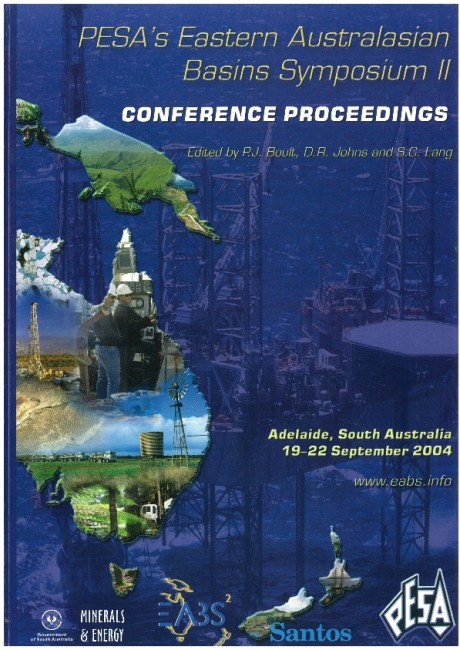Publication Name: PESA's Eastern Australasian Basin Symposium II
Authors: G.W. O'Brien, P.R. Tingate, J.E. Blevin, C.J. Boreham, A. Mitchell, C. Calver and A. Williams
Date Published: December 2004
Number of Pages: 35
Reference Type: Book Section
Abstract:
A study of the Sorell Basin, and especially the Strahan Sub-basin, on the west Tasmanian margin, has revealed the presence of an active hydrocarbon generation, migration, leakage and seepage system. Source rock mapping, combined with 2D basin modelling, has shown that a newly interpreted Cretaceous source rock system has been sufficiently mature to expel hydrocarbons over much of the Strahan Sub-basin since the Early Tertiary. In contrast, a previously identified shallower, high-quality, oil-prone Maastrichtian source interval is immature to only marginally mature and is hence unlikely to have contributed significantly to hydrocarbon inventories over most of this region. Hydrocarbon leakage indicators such as gas chimneys are distributed preferentially along northwest- and N-NW-trending fault arrays and are focussed up-dip from areas where the deeper Cretaceous source system is thermally mature. The distribution of the gas chimneys, when combined with observations on the direction of the regional stress field and simple PVT considerations, indicates that the fault seal integrity of traps with bounding faults which trend northwest or north-northwest is probably low, and that the deeper Cretaceous source rock is probably more gas-prone than the Maastrichtian source horizon. Northeast to east-west trending fault blocks will probably have higher fault seal integrity, but if such targets cannot beidentified, NNW-trending faulted traps with shallower-dipping bounding faults, or stratigraphic traps, represent more attractive targets.
Apparently active seepage was identified at several locations, with high seismic amplitudes at seafloor being present directly above prominent chimneys; these high amplitudes are probably related to the presence of anomalously dense authigenic carbonates, which formed as a result of hydrocarbon oxidation. These observations, when combined with the reported occurrence of thermogenic hydrocarbons within seafloor sediments in the area, indicate that active hydrocarbon seepage is occurring. It is, however, presently impossible to determine whether the seeping hydrocarbons were produced from an oil-, condensate- or gas-prone source. Establishing this would significantly improve our understanding of the prospectivity of the west Tasmanian margin.


